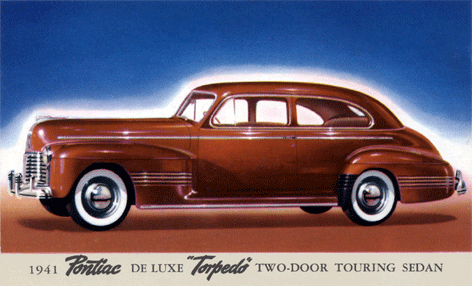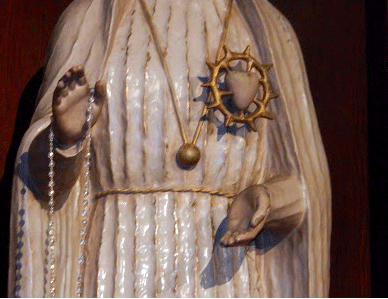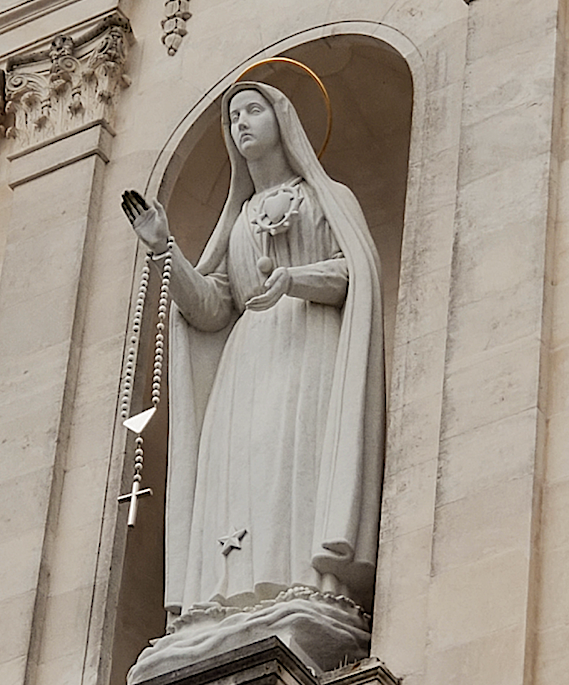Scroll Down To Order
Scroll Down To Order
A flicker of hope
is all that stood
. . . against barbarism.
Another outbreak of such a crisis of madness
[meaning the First World War]
would necessarily involve the destruction of
society in the public order. June 1, 1933
People cried out
for a better future.
Germany neither intends nor wishes
to interfere in the internal affairs
of Austria or to conclude an Anschluss. May 1935
If the problem is solved,
there will be no further territorial damands
in Europe by Germany. Sep 1938
CASTLES OF THE MIND ... VENTURE ACROSS ALL BRIDGES

History and a Historian
How great and wondrous is the work of God. This link will pull no punches. One must remember that the text of the Secrets of Fatima were completed and written down in 1944, then handed over to the Vatican but they refused it and did not want it. In 1946, the Pope of the time, Pius XII, declared De para Virginis Mariae, an encyclical to the church’s bishops on the possibility of defining the Assumption of the Blessed Virgin Mary as a dogma of faith; he received a favorable response and after almost 2,000 years, it became a dogma of faith in the Catholic religion. Eleven years later, the 3rd Secret was delivered and accepted by the Vatican. Four years after, the Vatican mysteriously remained silent about the Third Secret of Fatima.
WHY? YOU WILL BE GUIDED through HISTORY with the answer.
It is best not to view this in landscape mode.

Above is a photograph of Pope Pius XII.
Three further points existed before 1959. The 1950s were the beginning of the Age of Space Exploration, scientific advances on a scale never-before-seen, the rise of civil rights, and the beginning of big troubles for the hierarchy of the Catholic Church. In 1951,a big racket happened when a false letter alleged to be written by Lucia to the bishops of Spain made the rounds, and which was publicly corrected by a Father Jose P Aparicio, SJ,( not to be confused with other Aparicios including Fr do Emilio who has a connection to the Marian Special Collections.)
He was a very good friend of her’s who was stationed in Brazil; he died there in 1966. He had written, “I have not been able to speak with Sister Lucia because the Archbishop could not give permission to meet her. The conditions of isolation in which she finds herself have been imposed by the Holy See. Consequently, no one may speak with her without a license from Rome.” The next story is interrelated.
Many scholars in the immediate post-World War II era admired a Jesuit by the name Pierre Teilhard de Chardin. It doesn’t sound stupid when you first hear he believed the church should ally itself with the sciences. The path he took was in a sense to use science, from astronomy to micro-biology. He believed in Darwinian evolution to the hilt, and that a new humanity was in the state of emergence, and it should follow the powers of science and scientific research to attain the “Omega Point”, the point in the future where unification and equalization of the human races would be attained.
That he did not like things supernatural or the Christmas spirit—they made him choke—seemed not to matter much to his followers.
One of his famous speeches was made in 1947 at an international meeting of Jesuits at Versailles, France. He urged his fellow intellectual clerics to combine scientific research with faith for it was destined to become the essential human act and the most direct form of Christification and adoration.
To reach the Omega Point, one had to unchain the dependance on capitalism. Unification and equalization could not be reached, according to him, unless priests and nuns would strive for better justice in human society, hence it was not a purely scientific approach, according to Jesuit scholar Malachi Martin, SJ.
The two greatest weaknesses of de Chardin, in my mind,—were that he was completely disillusioned with the doctrines of the Church, and he held a twisted belief in the greatness of Marxist thought.
On modern history, he firmly believed that no religion offers us the God we need. He often wrote the Marxist God of progress and the Christian God must agree and forgive. In its heyday, Moscow showcased his written works in the Moscow Hall of Atheism. But, forget the picture of radicals everywhere left and right. This was the forties and the 1950s, the nifty-fifties—and also, I think, the last full decade when people knew what morality was, but that is for another story.
An inkling of what was to happen to the Catholic Church some 30 years later in large scale fashion began to appear in the early 1950s. Pan-Christicism. The complete transformation of the priesthood, the divinity of Jesus, redemption by His death on the cross, Original Sin, the Sacrifice of the Mass, the rise of what was later the geo-political-religious term Liberation Theology, which as spelled by Teilhard de Chardin, the face of Marxism was to be the hope of victory. The abandonment of the reality of Hell and Heaven.
The experimentation of allowing worker-priests to become completely immersed as ordinary workers, in the spirit of inquiry—but, it backfired, as the path of gaining souls saw a decrease in priest ordinations, as they either defected, quit or married.
As for the dogma of the Blessed Mother’s assumption into heaven and her purpose, he saw her importance only as a necessity to offset the masculinity of Jehovah, a simple bio-psychological necessity as he called it. His thesis and beliefs were later put down, yet, it did not disappear, for his form of trajectories of life continue to influence many high-level thinkers of the religious hierarchy. Here are three video links: on Teihard de Chardin and Revelation; in espanol; and finally on de Chardin by young PhDs (1 hour) (courtesy of Sensus Fidelium, ADN Opinion, and Georgetown University.)
All these thesis and depositions of thought were outside the scope of Lucia. Lucia Santos was only 10 years old when she was given a special task by God. For some strange reason she was chosen by God, and despite bedlam, two world wars, countless world revolutions and the rise of fanatical Islamo-Nazi terrorism and thesis, on a timescale nearly 90 years, never wavered from what she was told to promise.
However, the Lucia of the 1940s and 1950s was much different than what you may know. In the 1940s and 1950s, Lucia was not constricted completely as to who she could talk and see. By 1948, Sister Lucia got a taste of celebrity life, the attention given by writers and the literary world. She granted interviews about Fatima and even corrected written pieces by authors.
On the 15th of July, 1946, in one of those interviews she met Fathers Roca, Galamba and an American professor named William T. Walsh, who point blank asked her to clear up contradictory versions about the second part of the 2nd Secret. Eyewitnesses say she spoke sedately and had a great memory. Sister Lucia was living in the college of Sardo at the time and was officially named Sister Maria das Dores. She explained that what the Blessed Lady wanted was to consecrate Russia to Her Immaculate Heart by a special ceremony, and if it was not done, Russia would propagate everywhere with no peace in the world. She also explained that the United States was never mentioned by name but that it would not be spared by Communism if it was to succeed in world domination.
After WW II, Lucia was is her mid thirties and not in a humble field of Portugal in 1947 as when she and her two cousins had been when they experienced the visions. This is the spot, present-day Fatima, where three children had predicted that a miracle would happen on that October day. Today, Fatima holds a great Catholic Shrine and in May many pilgrims of many nationalities come to Fatima, Portugal. It has a great paved amphitheater, but in 1917 it was just a great hollow, as though created by a meteor in some prehistoric age.


For much of 1917, there was no international Communism, and for that matter there was no Soviet Union, either. Yet, the Blessed Lady mentions Russia. All the things you were taught about the USSR in your history books, the USSR was a big nothing 107 some years ago. Remember, Communism, had, and has, the fundamental believe in anti-Christianity.
Here is a short 6 min audio from historian Malachy Martin before we go to 1947. Hear it in his own words.




Behold, the author, above with an initial portion of his work. The sculptor Rev. McGlynn.
How great and wondrous is the work of God. For atop a mountaintop one is relatively in awe. But the novel prospect, the Miracle of Fatima, compared to millions of years of God's perfection is recent and is as formidable as a mountaintop.
My digital book will continue to cover Fatima, Fr. Andrew Wingate, Akita and Garabandal, with chapter 7, to deal with the immediate past, like from 40, 30, or less years ago. But, for now, I thought it would be interesting to tackle something new that occurred about 75 years ago that was once part of history that was well known in America, and Europe. The following passages are from a time circa 1947. In the 1940s, Sister Lucia was pretty free to whom she could talk and see.
When Lucia was 36 years old, she was contacted by a sculptor who of all things wanted to do a sculptor of the lady whom had appeared to her. At first it seemed out of the question, but for whatever reason, she consented —along with her superiors—and off to 1947 we go.
The sculptor story and Sister Lucia
An American from New Jersey named Thomas McGlynn O.P. went to Fatima. The O.P. signifies he was a cleric, a Dominican priest. He passed away in 1977. His story began with an idea of doing a sculpture of Our Blessed Mother, but with a unique perspective. He wanted to interview Sister Lucia and from her mouth get ideas on how best to represent the sculpture. He wasn’t even sure if he would get the ok, but he did. The story is recounted in his book, Vision of Fatima. I have the 1951 printed version from Great Britain. A later version has been recently published in 2017. Lucia when she first left her home and family, was placed in an orphanage and then moved on as a nun. In winter of 1947, McGlynn was commissioned to make a statue of Our Lady of Fatima and travelled to see Sister Lucia, then known as Irma Dores, brought to her a small model for starters and awaited direction and criticisms. And, that she did. Below the next two paragraphs is Rev. McGlynn and his first model.
The representation Fr. McGlynn did, was as Lucia told him, a representation that reminded her more of when she saw the Lady in June, when She took out of her pocket a Rosary, draped it over the palm of her right hand and joined her hands in prayer. Before she joined her hands in prayer, to use Lucia’s words, “She appeared at first as in the other apparitions, then she opened her hands, extended her arms to show Fr McGlynn, with the forearm forward of the plane of her waist and elevated only slightly, above the horizontal,” and the head gently arched, palm downward.
Lucia said, “She always had a chord with a little ball of light.” The first investigations of 1917 had called it a cord and tassel, but here Lucia corrected it, confirming it like a little ball of light held by a chord like the way a pendant falls from around the neck. It went above the waistline.


Lucia remembered the Lady’s left hand was upturned near the center, close to the body, with the finger tips a little below the waist. Lucia had to correct the hairline. McGlynn did his model with a hairline that showed to employ a more youthful appearance. “I never saw the hair,” Lucia related. They took a while getting the right height and extension of the arms and hands, and the description of how the Immaculate Heart appeared, surrounded by thorns. Quite an image. She showed the exact position to the sculptor. He didn’t like the idea of a heart appearing out of the body. But, that was the manner she described it verbatim, and so that is how he had to do the sculpture.

There were only 2 garments visible, a simple tunic and a long mantle, or veil, with the tunic having no collar and no cuffs. The Madonna had a star, and her dress fell way below the knees. Our lady was young looking, as a teenager. The picture above reflects the correct width of the sleeves. The picture below is the full sculpture. She is not standing on a cloud, for she rested on the top of the leaves, according to Sister Lucia.

Anyone who interviewed Sister Lucia in the 1940s and 50s saw she possessed a sharp, keen mind when she talked. Lucia affirmed more lines to the veil and tunic, straighter but pointed out to place the lower part of the mantle further to the back. That messed up the sculptor’s grace of composition, as he called it, but he listened. For 9 days, he stayed at the colegio, in the priest’s house as his workshop. To make a statue which would resemble the apparition as close as possible.


Above, in black and white is Sister Lucia after the completion of McGlynn’s work in 1947. Subsequently, he was commissioned to do a huge version of the statue which was completed on April 5, 1958. His work was done at the Daprato Studios in Pietrasanta, a little town known for its involvement in carving marble. The beautiful statue was dedicated at the shrine in Fatima on May 13, 1958, first placed on a pedestal and then placed in the niche of the tower of the Basilica. You can see the beautiful huge sculptor by Rev. Thomas McGlynn OP in a close-up, taken by the author in color below. The photographs and videos show the courtyard of the Fatima Shrine. (Of the 3 examples of the Basilica, the first photo of the entire Basilica with the pilgrims has a a small pointer to the niche in a black arrow below. On some Smartphones, the arrow shows up grey, I do not know why it does that. Press lower corner to activate
or deactivate sound.





We are not in 1947. I would like to close with the following, if I may. A new and horrible vile act occurred on October 10, 2025 while thousands of pilgrims were crossing the Holy Door in the solemn atmosphere of the Jubilee year of hope. Suddenly out of nowhere, a crazy man dropped down his trousers and began to urinate on the altar of St. Peter Basilica in Rome. This is the third vile act in only 2 and a half years in St. Peter, and the Secretary of State, again, acted with an attitude of letting it slide. He was appointed by former Pope Francis, and despite the gravity of evil, when he found out, did nothing. Back in June of 2023, a totally naked man jumped onto the sacred altar of St. Peter during Mass with the words “Save children of Ukraine” on his back and also screaming that, and Feb. of 2025, a man climbed onto the same altar, knocked down six candelabras and damaged part of the main altar. Secretary of State Parolin said publicly nothing in both cases, but on June 3, 2023 a quiet penitential rite was presided by a Cardinal Mauro Gambetti. He is Vicar General of the Pope for Vatican City and in charge of security of St. Peter—was also appointed by Francis. When the second vile act was done, no act of reparation was performed.
When Pope Leo found out about the latest incident of Friday Oct. 10, he put his foot down. He immediately ordered a penitential rite in St. Peter’s Basilica. The rite of reparation for a profaned church is one of the most solemn forms of public supplication in the Catholic liturgy. The rite could have been held next day on Saturday, however Cardinal Gambetti, for reasons that remain unclear, chose not to do anything. And, the Secretary of State also did nothing. To remain silent as if nothing had happened just to avoid conflict? as the narrator described. Baloney. The seriousness is a contemporary look at a church so divided as how to respond to evil, has become the bottom line, and Pope Leo XIV reacted in a way his predecessor never did regarding profanations and never hesitated to put his foot down.
Sacred Silere Non Possum against profanation
The Ceremoniale Episcoporum, no. 1070, is explicit: “A church is profaned if, to the scandal of the faithful, gravely injurious actions are committed within it, which, in the judgment of the local ordinary, are so serious and contrary to the sanctity of the place that it is no longer lawful to perform worship there until the injury has been repaired by a penitential rite.”